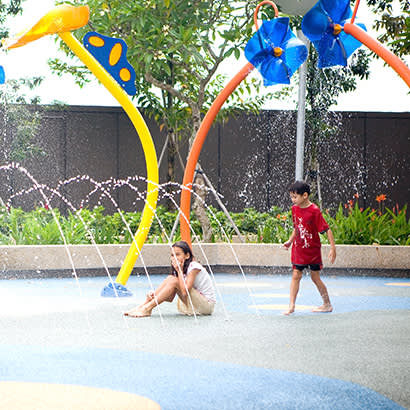
For an enhanced digital experience, read this story in the ezine.
If aquatics programs operated during the 2020 and/or 2021 season, they likely were modified to meet the guidelines within the city, county or state and adapted to fit the needs of each specific community. While challenging, this innovative and community-focused approach to programming is a trend that will continue post-pandemic. Some programs will come and go, but others have, and will continue to, open doors for a unique and diverse future in aquatics. Here are a few trends in aquatics programs that will continue to shape the field:
Outdoor Recreation
Pandemic restrictions on indoor and close-contact activities have encouraged people to move outside, and the interest in outdoor recreation is a trend that will continue post-pandemic. Increased popularity in water activities and sports, such as kayaking or stand-up paddle boarding, opened new avenues for aquatics professionals with access to open bodies of water to innovate their program offerings. This might include learn-to-swim programs at the lake, unique special events on the water, or even ongoing meetups for various age groups.
Inclusivity
Aquatics programs, particularly those that focus on drowning prevention and learn-to-swim initiatives, are essential to communities. Providing these programs always has been a key focus for recreational aquatics, but the changing tides of the pandemic offer aquatics professionals the opportunity to reassess the who, when, where and how of these essential programs. To be inclusive, programming may need to be restructured to address:
- Program cost and the ability to pay
- Special needs of participants and/or their families
- Flexibility in scheduling, including early morning or evening programs
- Physical locations closer to participants, such as schools, private gyms, open bodies of water, etc.
Pool Reservations
Whether for lap or open swim, many participants have appreciated their community’s pool reservation system. The certainty that they will have the space they requested upon arrival and for a specified time frame is a huge benefit to participants. Additionally, there is a sense of accountability for the participant who now has an obligation to show up and/or release their reservation. From an operations perspective, reservation systems provide aquatics professionals with the data to support business decisions, such as facility hours, programming and staff scheduling.
Hiring and Retention
Hiring and retention in aquatics programs has never been more difficult. Seasonal employment has its own challenges, but the added struggles of facility, program and health restrictions have greatly impacted this process. As a result, aquatics professionals are implementing a variety of tactics that likely will remain beyond the pandemic. This includes offering free lifeguard training, partnering with local high schools and colleges on mentor-style programs, providing incentives and bonuses for incoming or returning employees, or increasing the timeline for hiring by promoting future opportunities six to 10 months in advance.
Innovatively-driven and community-focused programs are trends that are leading the aquatics industry post-pandemic. They blossomed as a result of a challenge, but will become the heart and soul of what communities will expect in the future.
Sarah Sharits is Strategist for Gilbert (Arizona) Parks and Recreation.

